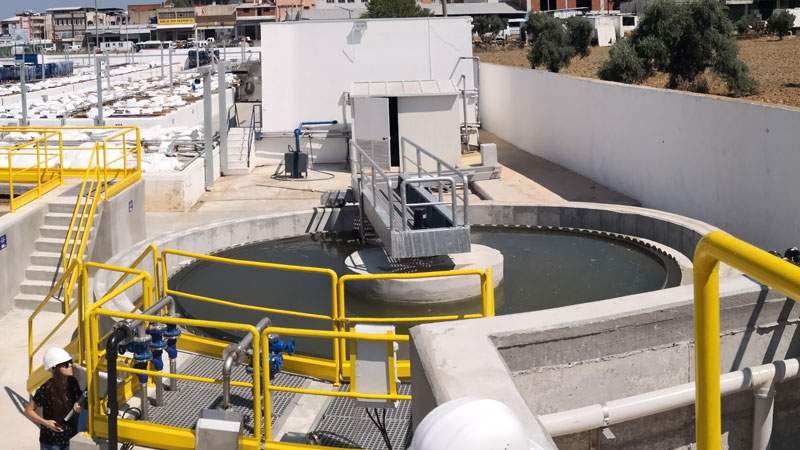Chemical Wastewater Treatment
As EGESIS Environmental technologies company, we use latest wastewater technologies and chemical treatment process in our wastewater treatment plant projects for industrial and municipal (sewage) operations.
Where and When to Use Chemical Treatment for Wastewater
Chemical treatment is used as wastewater treatment solution in industrial wastewater and drinking water treatment. It consists some chemical reaction to improve water quality. The purpose of chemical treatment is to convert soluble contaminants into insoluble or less soluble compounds and to provide settle of colloidal and suspended solids. Chemical treatment is generally used wastewater which contain high pollution load such as metal, textile, leather vb. industries
Chemical Wastewater Treatment Methods

- Neutralization
- Chemical Precipitation
- Disinfection
- Coagulation and Flocculation
- Ion Exchange
- Adsorption
Neutralization
Neutralization is a chemical process which is used for maintaining the pH of wastewater whether it has acidic or basic characteristic. Neutralization is important in chemical precipitation process to provide the appropriate pH value at which the reactions will take place and before biological treatment, to provide favorable pH for microorganism since bacterial activities occur at certain pH values. Neutralization is also necessary to meet discharge criteria. The lack of alkalinity (low pH) in wastewater requires base addition. In this case, to adjust pH around neutrality, lime, calcium hydroxide, sodium hydroxide and sodium carbonate (soda ash) can be used. On the other hand, lack of acidity (high pH) in wastewater requires acid addition to adjust pH to acceptable range. Sulfuric acid and carbonic acid are the most common chemicals used for this condition.
Chemical Precipitation
Chemical precipitation is a process which is used for removing soluble contaminants from water and wastewater by converting them into insoluble or less soluble in water. In order to convert dissolved contaminants into solid particle form (precipitate), chemical precipitation agent is used. Lime, alum, Ferrous Sulfate, Ferric Chloride and polymers are some examples of precipitation agents. Chemical precipitation can be used for the removal of metals, inorganic and suspended solids, fats, oils, grease and some other organic substances from wastewater.
Disinfection
Disinfection is a chemical treatment process which provides the protection of the microbial wastewater quality. In order to protect public health and meet wastewater discharge criteria, disinfection is very important. Chlorine and ozone are the most common used disinfectants which provides removal and inactivation of pathogenic microorganisms such as microbes, viruses and protozoan.
Coagulation and Flocculation
Coagulation and flocculation processes are chemical treatment processes which are used both in water and wastewater treatment. Wastewater includes suspended solids and colloidal substances which causes odor and turbidity in water. Suspended solids carry negative charges and they repel each other when they come close together. So, they remain in suspension. In order to clump them together, proper coagulants and flocculants are used. Coagulation and flocculation processes occur in successive steps, in coagulation process, negatively charged suspended solids are destabilized by introducing positively charged coagulants with rapid mixing. Then, by the addition of flocculants, the destabilized particle accumulate to larger agglomerates. In flocculation step, slow mixing is applied to allow particle collision and growth of floc. After the formation of larger flocs, sedimentation can be used to remove particles from water.
Ion Exchange
Ion exchange is a water treatment process which commonly used for water softening and demineralization. It is a reversible chemical reaction. Ion exchangers are insoluble solid materials, which carry exchangeable positively or negatively charged ions. When the ion exchanger is in contact with solution, it provides removal of undesirable ionic contaminants in solution by replacing with other ions which have similar charge.
Adsorption
Water and wastewater includes soluble contaminants and they have negative impacts for the environment and public health. Adsorption is a wastewater purification process for removing soluble contaminants from wastewater by attachment to the surface of a solid substance which is called adsorbent. Adsorbents have very high internal surface area that allow attachment of contaminants onto its surface. Activated carbon, activated alumina, clay colloids and resins are some examples of adsorbents. Wide range of organic pollutants can be removed by adsorption process.